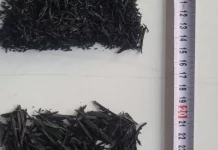DM Monitoring
CHICAGO: The type and direction of the force on a cell alters gene expression by stretching different regions of DNA, researchers at University of Illinois (UI) and collaborators in China found in a study.
The researchers developed a method that allows them to move a magnetic bead in any direction, giving them a picture of the ways forces act on a cell in 3D.
They call it three-dimensional magnetic twisting cytometry, according to a news release posted on UI’s website.
They found that the force from the magnetic bead caused a rapid increase in expression for certain genes, but the amount of the increase depended on the direction the bead moved.
When the bead rolled along the long axis of the cell, the increase was the lowest, but when the force was applied perpendicularly across the short axis of the cell, gene activity increased the most. When the bead was moved at a 45-degree angle or rotated in the same plane as the cell to induce shear stress, the response was intermediate.
“These observations show that gene upregulation and activation are very sensitive to the mode of the applied force, when the magnitude of the force remains unchanged,” said study leader Ning Wang, a professor of mechanical science and engineering at UI.






